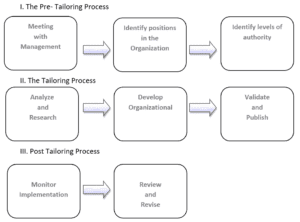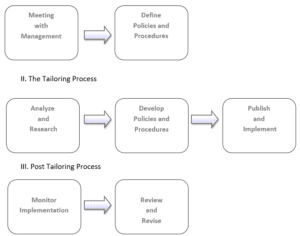One of the most important parts of a company’s structure is to have a well-structured human resources management department. It is the backbone of the company’s sustainability.
A company’s profile is mainly judged by the policies and the working atmosphere of the company.
Definition
“Human resource management is the integrated use of system, policies and management practices to support the organization to meet its desired goal through recruitment, maintaining and development of employees.”
The process of hiring and developing employees so that they become more valuable to the organization. Human Resources Management includes:
- Conducting job analyses
- Planning personnel needs
- Recruiting the right people for the job
- Orienting and training
- Managing wages and salaries
- Providing benefits and incentives
- Evaluating Performance
- Resolving disputes
An organization cannot build a good team of working professionals without good Human Resources.
In this document you will find a full plan to that covers all aspects of the human resources department to be developed and implemented, along with the Methodology and steps to be followed throughout the process.
How do we do it
Visual representation of how a firm intends authority, responsibility, and information to flow within its formal organizational structure. It usually depicts different management functions (accounting, finance, human resources, marketing, production, R&D, etc.) and their subdivisions as boxes linked with lines along which decision making power travels downwards and answerability travels upwards. Also called organizational chart.

JOB ANALYSIS
Detailed examination of the tasks that make up a job role, conditions under which they are performed, and what the job requires in terms of skills. Its objectives include determination of the most efficient methods of doing a job, enhancement of the employee’s job satisfaction improvement in training methods, development of performance measurement systems, and matching of job-specifications with the person-specifications in employee selection.
JOB DESCRIPTION
A broad, general, and written statement of a specific job, based on the findings of a job analysis. It generally includes duties, purpose, responsibilities, scope, and working conditions of a job along with the job’s title, and the name or designation of the person to whom the employee reports. Job description usually forms the basis of job specification.
METHODOLOGY
1. Identification of Job Analysis Purpose
2. Who Will Conduct the Job Analysis?
3. How to Conduct Job Analysis Process?
4. Preparation of Job Analysis Process
5. Data Collection
6. Documentation Verification and Review
7. Developing Job Description and Specification
Policies and Procedures
Policies and procedures are designed to influence and determine all major decisions and actions, and all activities take place within the boundaries set by them. Procedures are the specific methods employed to express policies in action in day-to-day operations of the organization. Policies and Procedures Help:
- Reduce the risk that anyone misunderstands the conditions of employment
- Ensure fairness
- Give you a good reference point to confirm that you’re complying with all relevant legislation
- Help you get consistency across multiple locations.
METHODOLOGY

Must Have Policies and Procedures
All organizations regardless of size need, as a minimum, the following policies and procedures:
- Code of Conduct
- Dress Code
- Anti-Bribery
- Disciplinary Action
- Attendance and Absenteeism
- Overtime/Deduction
- Recruitment and selection process
- Sickness
- Bereavement Leave
- Annual Leave and Public Holiday
- Maternity/ Paternity Leave
- Non-Smoking Policy
- Mobile Allowance
- Information Security and Confidentiality
- internet, e-mail and social media use
- Usage of Company’s equipment and resources
Good to Have Policies and Procedures
In addition to the Must have Policies and Procedures of an organization, a set of Good to Have Policies and Procedures can be found below:
- Performance Appraisal
- Leaving the business / Retirement
- Dignity at work Anti-Harassment and Anti-Bullying
- Sabbatical Leave
- Flex – Time
- Orientation/ Induction
- Substance Usage
Training and Development
The official and ongoing educational activities within an organization designed to enhance the fulfillment and performance of employees.
METHODOLOGY
Training Needs Analysis
- Define the needs of the company by identifying weak areas where training would prove beneficial
- Define short- and long-term goals of the company, and identify possible training to meet those goals
- Roll out TNA Form to be filled by the employee in coordination with the line manager.
- Collect and Validate TNA Form results
- Create Training Calendar
- Prepare Yearly Training Plan
Performance Appraisal
The process by which a manager examines and evaluates an employee’s work behavior by comparing it with preset standards, documents the results of the comparison, and uses the results to provide feedback to the employee to show where improvements are needed and why.
Performance appraisals are implemented to determine who needs what training, and who will be promoted, demoted, retained, or fired.
METHODOLOGY
- Identify Performance appraisal and Job Analysis Relation
- Set Performance Appraisal Process
- Establish goals and desired outcomes for each employee
- Setting performance standards
- Comparison of actual goals with goals attained by the employee

